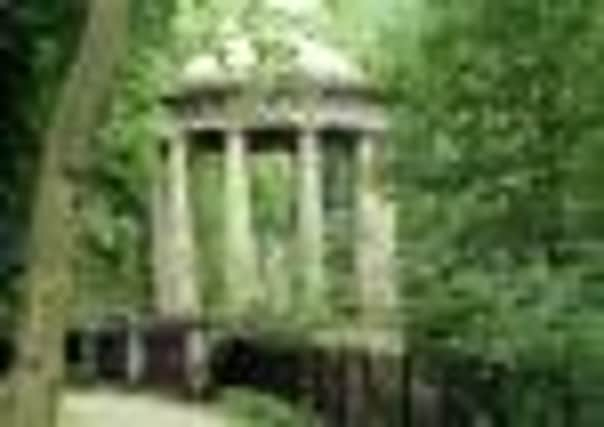Sculpture in Water of Leith becomes final restoration in Twelve Monuments project


The well, on the Water of Leith in Stockbrigde, is to form the final part of the Twelve Monuments project, a programme that has seen a dozen historic landmarks renovated and preserved for future generations across the city.
Much of the £232,839 needed to preserve the structure will be footed by Edinburgh World Heritage and Edinburgh City Council, leaving £50,000 required to be raised from public donations.
Advertisement
Hide AdAdvertisement
Hide AdThe well will be restored to full working order by the work – but project chiefs have ruled out allowing people to drink from it, an act which was believed to cure ailments as diverse as gout, backache and blindness in the 18th century.
David Hicks, of Edinburgh World Heritage, told the Evening News: “We are aiming to have the monument fully restored by spring next year. Some parts of the repair are pretty standard, but specialist work is needed to conserve a lot of the ornamentation. For example, the pump room includes a highly decorative mosaic decorated with stars, which will need specific attention.”
St Bernard’s Well is built over a natural spring which was said to have been discovered by pupils from George Heriot’s school in 1760. It’s name is taken from St Bernard of Clairvaux, the first Cistercian monk placed on the calendar of saints, who legend has it once lived in a nearby cave.
In 1789 local philanthropist Lord Gardenstone bought the well and commissioned artist Alexander Nasymth to construct the monument, his first piece of architecture.
Nasymth took inspiration from his recent visits to Italy in the design of the circular classical temple. A statue of Hygeia, the goddess of health, cleanliness and sanitation, whose name the word “hygiene” comes from, stands at the centre of the open pillared dome.
It was believed by many that the mineral waters of the well were good for health, with claims of cured arthritis, back ache and even blindness put forward by believers. The well was even visited by Dr Victor Frankenstein in the novel by Mary Shelley.
Speaking of his travelling companion Henry Clerval, Dr Frankenstein states: “The beauty and regularity of the new town of Edinburgh, its romantic castle and its environs, the most delightful in the world, Arthur’s Seat, St Bernard’s Well, and the Pentland Hills ... filled him with cheerfulness and admiration.”
However, not everyone was convinced of the well’s healing powers, with some describing the water as tasting similar to “the washings from a foul gun barrel” or as having the “odious twang of hydrogen”.
Advertisement
Hide AdAdvertisement
Hide AdThough the water was bottled and sold in chemists for a time during the 1800s, it was closed to the public in the 1940s, and Edinburgh’s Medical Officer of Health ruled against reopening it.
Cllr Richard Lewis, the council’s culture and leisure convener, said: “The Twelve Monuments Project owes much of its success to close working between the council and Edinburgh World, but also to kind donations from the public, demonstrating the value that people place on Edinburgh’s cultural heritage.
“By restoring this unusual and quite beautiful well, we will be preserving a significant Edinburgh landmark for future generations – just as we have with eleven others before it.”
TENDER LOVING CARE
One of the first landmarks to benefit from the Twelve Monuments project was the Black Watch War Memorial, below, on The Mound. The memorial for General Wauchope and the men of the Black Watch regiment who fell in the South African War of 1899-1902 had cracks in its stone plinth which were filled.
The Bow Well, on Victoria Street, was also restored by the project, as was The Melville Monument in St Andrew Square.
The National Monument on Calton Hill received £78,000 worth of restoration work. Soon after, £350,000 was raised to repair damage to the roof of the Burns Monument on Regent Road.
Next was the Charles II Statue in Parliament Close, which received £57,000 worth of specialist conservation treatment.
The Nelson Monument on Calton Hill proved the most complex restoration, as the 762kg time ball had to be removed and replaced with the help of a crane.
Advertisement
Hide AdAdvertisement
Hide AdThe striking Gothic monument to the 5th Duke of Buccleuch outside St Giles’ Cathedral also underwent £40,000 of work.
The Princes Street Gardens statues of David Livingstone, Prof John Wilson and politician Adam Black were also restored.